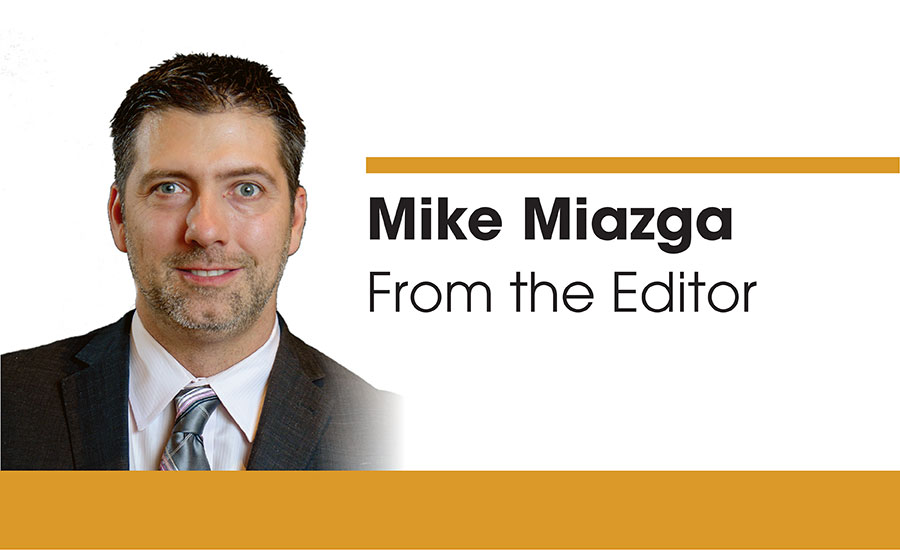A time to educate about water quality
Let’s face it. We take clean water for granted.

I can remember two times in my life where I’veencountered water-quality issues.
One was in Ireland about a decade ago when one of the towns we spent the night in had a boil order in effect. The hotel provided plenty of distilled water for guests. The other was on my first business trip to the Far East where I was cautioned beforehand not to drink the water. So what do I do in the hotel the first morning? Start to run my toothbrush under the sink. Luckily I caught myself before toothbrush met water.
Let’s face it. We take clean water for granted and assume what comes out of the faucet is good to go. Imagine what residents of Flint, Mich., must have been going through in recent times with discolored and odorous water being dispatched into their homes. The fact is we can’t imagine what they have gone through because most of us likely have never experienced something of that magnitude.
The Flint situation is bad news. But our industry, as it always does in times of need, has stepped up and then some in order to help the citizens of that city, located about 60 miles north of Detroit. Whether it’s local distributors donating and/or passing out bottled water, manufacturers donating product or contractors installing faucets and filters in homes on their own time, the PHCP-PVF industry is doing its absolute best to be of service during an emergency situation.
But when is the next Flint situation going to occur? With water infrastructure in this country in dire need of repair and replacement, experts say it’s not if, but when the next Flint becomes front-page news.
“This speaks to the infrastructure,” says Barbara Higgens, CEO and executive director of suburban Chicago-based Plumbing Manufacturers International, a group that has played a major role in assisting residents in Flint through its network of plumbing industry manufacturers. “There is a lot of pressure right now on flush rates and flow volumes, but the real culprit is aging infrastructure. With what happened in Flint, somebody has to bite the bullet and address the issue. It’s not getting any better. It’s a ticking time bomb.”
And the numbers show consumers are starting to take more notice of water-quality issues. A recent NSF survey shows 82% of consumers are concerned about emerging contaminants, such as pharmaceutical drugs, over the counter medications and other industrial byproducts, showing up in some water supplies.
But at the same time, a Water Quality Association survey reveals 70% of consumers believe water quality and safety are the responsibility of the municipality providing the water.
“Flint is unique but not alone,” Pentair National Sales Manager — Wholesale and Retail Channels Neal White says. “Flint provided high visibility to a problem. Recent water issues in this country have typically been followed by a path of a lot of public concern. Situations where there are boil orders because of a breach in infrastructure or bacteria being in the water occur a couple-hundred times a year in the U.S. Phone calls are made, there is a lot of activity and then people settle back in and there is no baseline change.”
White says water-quality change can indeed occur throughout the PHCP-PVF supply chain, starting with distributors. “Distributors have the ability to inform plumbing contractors that they can become a key part of the water-quality solution,” he says. “There are proactive ways to engage the residential plumber that he or she can be a solution to more of these water-quality-type issues. Plumbers can help their customers take more ownership and take control of the water that comes into their homes by offering very simple product solutions that can help insulate them from the real nasty stuff in the water.”
White, who notes all water-quality products should always be third-party certified to ensure they can remove specific water contaminants, encourages distributors to take a different view of the water-quality segment of the industry.
“Some distributors look at this business as an accessory line and don’t spend a lot of time on it,” he says. “The distributor is a great place to start. It’s where contractors go for guidance, information and product selection. The water-quality business is relatively simple. A lot of these products are simple plumb in and plumb out or you change the cartridges. It makes a pretty strong business case to educate contractors who can then help consumers choose the right products. I think it’s natural for a distributor to become part of the supply chain and help improve water quality in this country.”
Looking for a reprint of this article?
From high-res PDFs to custom plaques, order your copy today!









